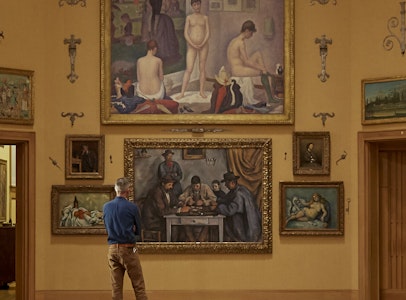Close-Looking Immersion: Matisse’s Blue Still Life
Thursday, May 15, 6 – 7:30pm

Henri Matisse. Blue Still Life (detail), 1907. The Barnes Foundation, BF185. © 2025 Succession H. Matisse / Artists Rights Society (ARS), New York.
$40; members $36
About the Class
Have you ever spent 90 minutes looking at a single work of art? It is remarkable what you start to notice—little details, individual brushstrokes, overall harmonies—when you give yourself the time and space to look carefully. In this series, we use the Barnes Method, an object-focused approach to art appreciation, to help you gain a deeper visual understanding of an iconic work in our collection. This month, we’ll unpack Matisse’s Blue Still Life. These immersive sessions are perfect for both seasoned art enthusiasts and newcomers wanting to slow down and dedicate time to looking, thinking, and discussing art.
The class is online-only. More about online classes.
Already registered? Log in to Barnes Learning.
Barnes classes will:
- Sharpen your observational and critical thinking skills.
- Improve your ability to communicate about art.
- Deepen your appreciation for cultures and histories outside your own.

Henri Matisse. Blue Still Life, 1907. The Barnes Foundation, BF185. © 2025 Succession H. Matisse / Artists Rights Society (ARS), New York.
Instructor

Kaelin Jewell
Jewell is a senior instructor in adult education at the Barnes and has been teaching art history for nearly 15 years. She holds undergraduate and graduate degrees in photography and art history from the University of Louisville’s Hite Institute of Art and Design and earned her PhD in ancient and medieval art history from Temple University’s Tyler School of Art. In addition to her work at the Barnes, Jewell is trained as an archaeologist and has worked on archaeological projects in the American Midwest and on the island of Sicily.
Barnes Method
Barnes Method courses follow the teachings of Albert Barnes and Violette de Mazia. Classes focus on rigorous formal analysis and direct visual engagement with works of art. In this method, close looking at art helps build critical-thinking skills that can be carried beyond the gallery walls.


